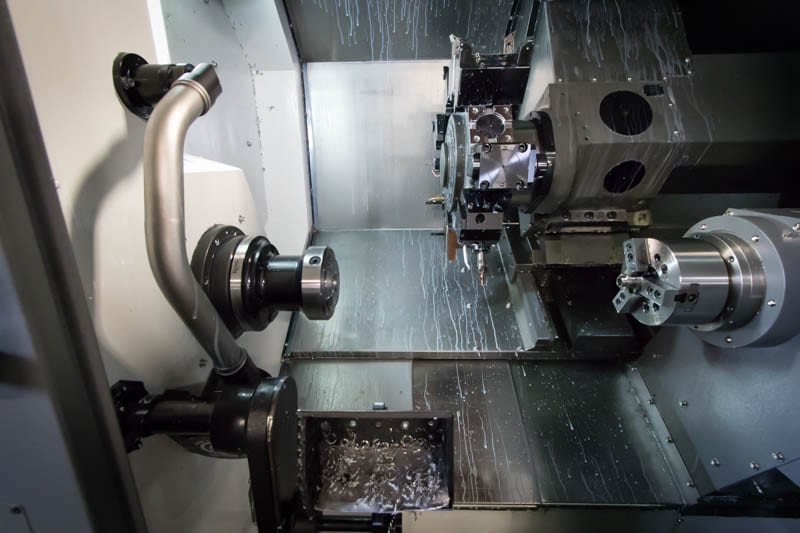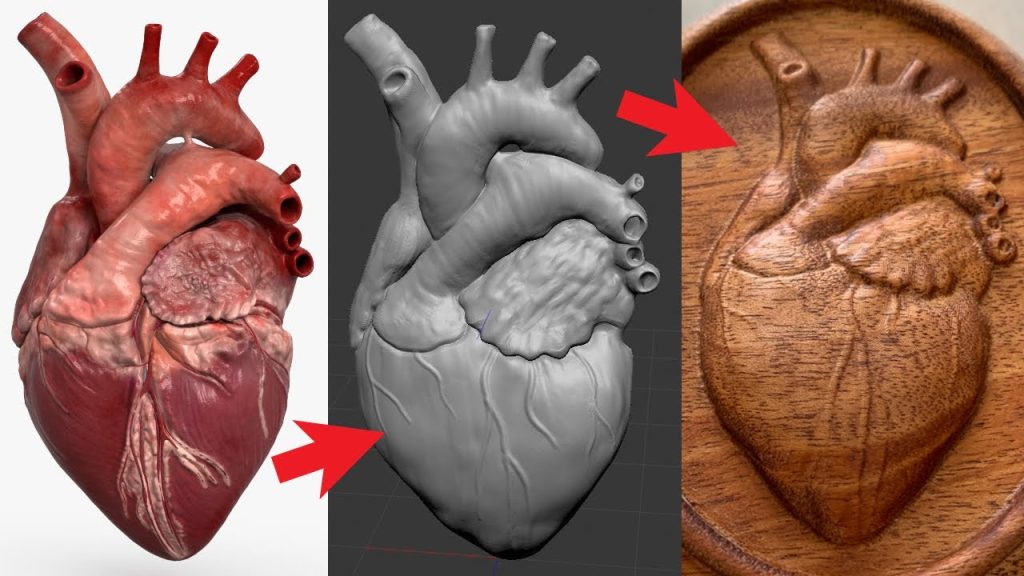Table of Contents
- How to Calculate CNC Turning Cycle Time?
- Step 1: Define the Process
- Step 2: Determine the Cutting Speed
- Step 3: Calculate the Feed Rate
- Step 4: Determine the Depth of Cut
- Step 5: Calculate the Machining Time
- Step 6: Determine the Number of Passes
- Step 7: Calculate the Total Machining Time
- Step 8: Add Setup Time
- Step 9: Add Tool Change Time
- Step 10: Calculate the Total Cycle Time
- Benefits of Calculating CNC Turning Cycle Time
- CNC Turning Cycle Time vs. CNC Milling Cycle Time
- Freequently Asked Questions
CNC turning cycle time is a crucial aspect of CNC machining that determines the efficiency and productivity of the process. It involves calculating the time required to complete a single revolution of the workpiece, from the start of the cutting process to the end of the cycle. In this article, we will explore the steps involved in calculating CNC turning cycle time and provide some useful tips to optimize the process.
If you’re new to the world of CNC machining or looking to improve your skills, understanding the intricacies of turning cycle time is essential. By mastering this technique, you can reduce production time, increase efficiency, and ultimately, improve the quality of your finished products. So, let’s dive into the details and learn how to calculate CNC turning cycle time like a pro!
How to Calculate CNC Turning Cycle Time?
To calculate CNC turning cycle time, you need to consider the cutting time, approach and retract times, and tool change time. The cutting time is the time taken by the tool to cut the material. The approach and retract times are the times taken by the tool to move from the starting point to the cutting point and back. The tool change time is the time taken to change the tool. Once you have these values, you can use the formula:
Cycle Time = Cutting Time + Approach Time + Retract Time + Tool Change Time.
How to Calculate CNC Turning Cycle Time?
Calculating CNC turning cycle time is an essential process in the manufacturing industry. It helps to determine the time required to complete a particular project and estimate the costs involved. In this article, we will discuss the steps involved in calculating CNC turning cycle time.
Step 1: Define the Process
The first step in calculating CNC turning cycle time is to define the process. This involves identifying the type of material to be used, the size and shape of the part, and the cutting tools required. Once you have defined the process, you can move on to the next step.
To define the process, you need to consider the following factors:
- The type of material to be used
- The size and shape of the part
- The cutting tools required
Step 2: Determine the Cutting Speed
The second step in calculating CNC turning cycle time is to determine the cutting speed. This involves calculating the surface speed and the spindle speed. The surface speed is the speed at which the cutting tool moves across the surface of the material, while the spindle speed is the speed at which the material rotates.
To determine the cutting speed, you need to consider the following factors:
- The diameter of the material
- The type of cutting tool being used
- The material being cut
Step 3: Calculate the Feed Rate
The third step in calculating CNC turning cycle time is to calculate the feed rate. This involves determining the distance that the cutting tool moves along the surface of the material in one revolution of the material.
To calculate the feed rate, you need to consider the following factors:
- The cutting speed
- The number of cutting edges on the cutting tool
- The type of material being cut
Step 4: Determine the Depth of Cut
The fourth step in calculating CNC turning cycle time is to determine the depth of cut. This involves calculating the amount of material that will be removed from the surface of the material in one pass of the cutting tool.
To determine the depth of cut, you need to consider the following factors:
- The type of material being cut
- The size and shape of the cutting tool
- The feed rate
Step 5: Calculate the Machining Time
The fifth step in calculating CNC turning cycle time is to calculate the machining time. This involves determining the time required to complete one pass of the cutting tool across the surface of the material.
To calculate the machining time, you need to consider the following factors:
- The length of the cut
- The feed rate
- The spindle speed
Step 6: Determine the Number of Passes
The sixth step in calculating CNC turning cycle time is to determine the number of passes required to complete the project. This involves dividing the length of the cut by the depth of cut.
To determine the number of passes, you need to consider the following factors:
- The length of the cut
- The depth of cut
Step 7: Calculate the Total Machining Time
The seventh step in calculating CNC turning cycle time is to calculate the total machining time. This involves multiplying the machining time by the number of passes required to complete the project.
To calculate the total machining time, you need to consider the following factors:
- The machining time
- The number of passes required
Step 8: Add Setup Time
The eighth step in calculating CNC turning cycle time is to add setup time. This involves accounting for the time required to set up the machine and prepare the material for machining.
To add setup time, you need to consider the following factors:
- The complexity of the project
- The skill level of the operator
- The type of machine being used
Step 9: Add Tool Change Time
The ninth step in calculating CNC turning cycle time is to add tool change time. This involves accounting for the time required to change the cutting tool during the machining process.
To add tool change time, you need to consider the following factors:
- The number of cutting tools required
- The complexity of the project
- The type of machine being used
Step 10: Calculate the Total Cycle Time
The final step in calculating CNC turning cycle time is to calculate the total cycle time. This involves adding the total machining time, setup time, and tool change time.
To calculate the total cycle time, you need to consider the following factors:
- The total machining time
- The setup time
- The tool change time
Benefits of Calculating CNC Turning Cycle Time
Calculating CNC turning cycle time has several benefits, including:
- Accurate cost estimation
- Improved production planning
- Reduced downtime
- Optimized machine utilization
CNC Turning Cycle Time vs. CNC Milling Cycle Time
While the process of calculating CNC turning cycle time is similar to that of calculating CNC milling cycle time, there are some key differences. CNC turning involves rotating the material while the cutting tool moves across the surface, while CNC milling involves moving the cutting tool across the surface of the material.
As a result, the factors that need to be considered when calculating CNC milling cycle time are slightly different from those for CNC turning cycle time. However, the basic steps involved in the process are similar.
In conclusion, calculating CNC turning cycle time is an essential process in the manufacturing industry. By following the steps outlined in this article, you can accurately estimate the time required to complete a particular project and optimize your production process.
Freequently Asked Questions
This section contains some frequently asked questions about calculating CNC turning cycle time.
What is CNC Turning Cycle Time?
CNC turning cycle time is the total time required to complete a single cycle of a CNC turning operation. It includes the time required to load and unload the workpiece, to set up the machine, to perform the machining operation, and to inspect the finished part.
The cycle time is an important factor in determining the productivity of a CNC turning machine. By reducing the cycle time, you can increase the throughput of your machine and produce more parts in less time.
How to Calculate CNC Turning Cycle Time?
To calculate the CNC turning cycle time, you need to consider the following factors:
- The time required to load and unload the workpiece
- The time required to set up the machine
- The time required to perform the machining operation
- The time required to inspect the finished part
Once you have determined these factors, you can add them together to get the total cycle time.
There are also software programs available that can help you calculate the cycle time more accurately.
Why is CNC Turning Cycle Time Important?
CNC turning cycle time is important because it directly affects the productivity of your machine. By reducing the cycle time, you can increase the throughput of your machine and produce more parts in less time. This can lead to increased profitability and a competitive advantage in the marketplace.
Additionally, accurate cycle time calculations can help you plan your production schedule more effectively and improve your overall efficiency.
What Factors Affect CNC Turning Cycle Time?
CNC turning cycle time can be affected by a variety of factors, including:
- The complexity of the part being machined
- The material being machined
- The cutting tools being used
- The speed and feed rates of the machine
- The skill level of the operator
By optimizing these factors, you can reduce the cycle time and increase the productivity of your machine.
How Can I Reduce CNC Turning Cycle Time?
There are several strategies you can use to reduce CNC turning cycle time, including:
- Improving the efficiency of your tool changes
- Optimizing your cutting parameters
- Minimizing the number of tool changes required
- Reducing the amount of time required for machine setup and calibration
- Using more advanced machining techniques, such as high-speed machining
By implementing these strategies, you can reduce your cycle time and increase the productivity of your CNC turning machine.
In conclusion, calculating CNC turning cycle time is a crucial task that can greatly impact the efficiency of your manufacturing process. By following the steps outlined in this guide, you can accurately determine the cycle time and make informed decisions to optimize your production.
Remember to always consider factors such as tool changes, material hardness, and machine capabilities when calculating cycle time. By taking these variables into account, you can ensure that your estimates are as accurate as possible.
Overall, mastering the art of calculating CNC turning cycle time takes practice and patience, but the rewards are well worth the effort. By streamlining your production process and minimizing downtime, you can increase your output and profitability in no time.
Request a quote today!
[contact-form-7 id="1578" title="Contact form"]
Please compress the file into a ZIP or RAR file before uploading. Alternatively, send through your RFQ by email.
enquires@unitymanufacture.com





